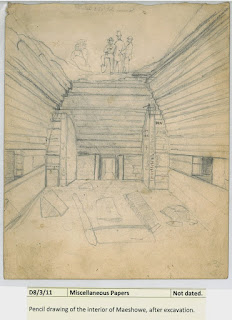ENQUIRIES
Throughout the lonely weeks of Lockdown and the gradual re-awakening of services, Archive staff have been diligently answering enquiries. Even during Lockdown itself, when most of our staff scattered to the four winds either self-isolating or re-deployed in essential services, there was always at least one person with a nose in a book or deciphering a document or developing a photograph.
Due to the high number of enquiries we received during this time period and the low numbers of staff, we are still working through the backlog. As we gradually catch up, please don't be too disappointed if we take a little longer than usual to answer, we will not forget you.
At the beginning of 2020 we changed to a paperless method of recording enquiries as around 80% now come via email. If anyone does actually write a letter, it is a source of much delight and everyone wants to see it. The last one we received was in green ink. What a treat! (we are so easily pleased...)
Each enquiry is recorded in a database and given a reference number. The enquirer is sent an acknowledgement and their number. We then record any work done and emails sent on our Enquiry Progress Report form. Enquirer's contact details are never shown on this form, they are only known by their initials. This helps to protect the enquirer's contact details which are only saved in the database. Any scans done are saved in the enquiries folder along with the Progress Report.
There are five members of staff who do enquiries, two full-time archivists and three part-time archive assistants who all job-share one position. Sometimes an enquiry is done by just one person, and sometimes by many of us, especially when one of us utilises the "Help! I'm Stuck" category. We all have developed different strengths and interests over the years, so sometimes it is good to bring a fresh pair of eyes to an enquiry or look at it from another perspective.
We don't charge for enquiries, but at the same time do not accept ones which will take a great long time. Some take a couple of hours research time at the most, but many can be done within an hour. When I say an hour, what I really mean is 10 minutes one day, 20 minutes another day, 30 minutes the next day all slotted in between our other daily tasks and running the searchroom.
Since Lockdown began up to the present day we have researched and answered enquiries on the following subjects:
Place names of Swona
Photos of Copinsay
Family History queries: Reid, Turfus and Corrigall, etc
Maeshowe drawing (see below)
 |
| Undated pencil drawing of Maeshowe, archive reference D8/3/11 |
Helping with research for Radio shows
Orkney Piers
Witchcraft trials
James Keith of Benholm and Cromwellian Orkney (see below)
 |
| Extract from Statement made by George Monck regarding an iron box of jewels, 18 January 1654 |
Old mills
Crown Chamberlains
Helping with research for journalists on articles
Councillors and council official enquiries
Vice-Admirals of Scotland
Margaret Gardiner
Stromness Footballers (see below)
 |
| A new deposit resulted from this enquiry of this photo and a small silver medal awarded in 1915, archive reference AccNo:2819. |
Scuttling of the German Fleet
Helping with research for documentary film makers
Motor Vehicle Registrations
Old maps (see below)
 |
| Lithographed plan of the commonty of Deerness as divided, 1839 Grainger and Miller, surveyor. Archive Reference D7/2/1[F4] |
Margaret Tait
Press gangs
Military history, particularly soldier's lives
Orkney's connections to the slave trade
Kirkwall Streets
Newspaper copies of particular articles or whole papers for birthdays and anniversaries
Helping with research for book publications both fiction and non-fiction
Orkney sound archives
Help with Fereday Prize projects
and many many more...
We do love enquiries and look forward every day to learning about the contents of our Archive collections, Orkney history and what you love to research too.



















